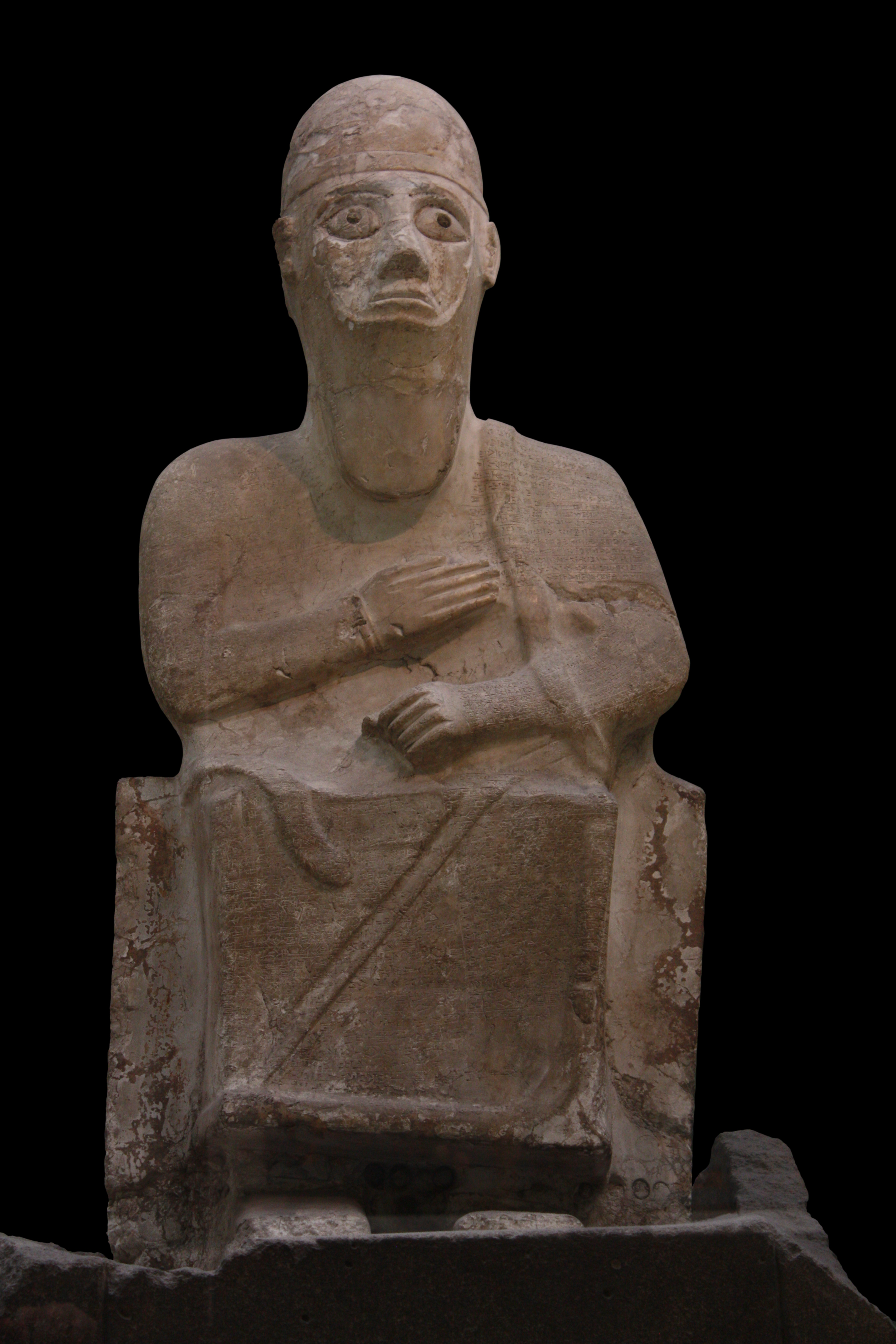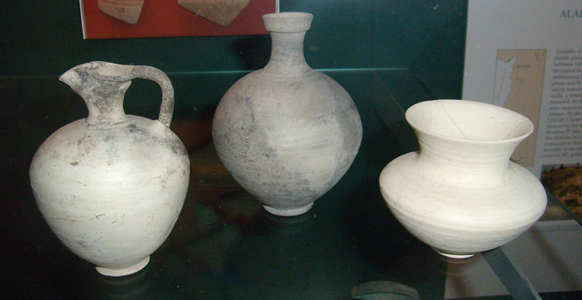|
Pilliya
Pilliya was a king of Kizzuwatna ca. the 15th century BC ( short chronology). He signed a treaty with Idrimi of Alalakh, allying with the Mitanni empire. He made peace with Zidanta II Zidanta II was a king of the Hittites (Middle Kingdom) in the 15th century BC. Life He was probably a nephew of Hantili II and had a wife Yaya. Zidanta made peace through the means of a parity treaty with a ruler named Pilliya, his counterpar .... Notes Kings of Kizzuwatna 15th-century BC rulers {{AncientNearEast-stub ... [...More Info...] [...Related Items...] OR: [Wikipedia] [Google] [Baidu] |
Idrimi
Idrimi was the king of Alalakh c. 1490–1465 BC, or around 1450 BC. He is known, mainly, from an inscription on his statue found at Alalakh by Leonard Woolley in 1939.Longman III, Tremper, (1991)Fictional Akkadian Autobiography: A Generic and Comparative Study Eisenbraums, Winona Lake, Indiana, p. 60: "...discovered by Sir Leonard Woolley in 1939...Although found in the debris of Level IB (ca. 1200 B.C.), the statue was dated by most scholars back to Level IV (ca. 1500 B.C.)..." According to that inscription, he was a son of Ilim-Ilimma I the king of Halab, now Aleppo, who would have been deposed by the new regional master, Barattarna, king of Mitanni. Idrimi would have succeeded in gaining the throne of Alalakh with the assistance of a group known as the ''Habiru'', founding the kingdom of Mukish as a vassal to the Mitanni state. He also invaded the Hittite territories to the north, resulting in a treaty with the country Kizzuwatna. Jacob Lauinger considers Idrimi as a histori ... [...More Info...] [...Related Items...] OR: [Wikipedia] [Google] [Baidu] |
Kizzuwatna
Kizzuwatna (or Kizzuwadna; in Ancient Egyptian ''Kode'' or ''Qode''), was an ancient Anatolian kingdom in the 2nd millennium BC. It was situated in the highlands of southeastern Anatolia, near the Gulf of İskenderun, in modern-day Turkey. It encircled the Taurus Mountains and the Ceyhan River. The centre of the kingdom was the city of Kummanni, in the highlands. In a later era, the same region was known as Cilicia. Land The country possessed valuable resources, such as silver mines in the Taurus Mountains. The slopes of the mountain range are still partly covered by woods. Annual winter rains made agriculture possible in the area at a very early date (see Çatalhöyük). The plains at the lower course of the Ceyhan River provided rich cultivated fields. People Several ethnic groups coexisted in the Kingdom of Kizzuwatna. The Hurrians inhabited this area at least since the beginning of the 2nd millennium BC. The Hittite expansion in the early Old Kingdom period (under Hat ... [...More Info...] [...Related Items...] OR: [Wikipedia] [Google] [Baidu] |
Mitanni
Mitanni (; Hittite cuneiform ; ''Mittani'' '), c. 1550–1260 BC, earlier called Ḫabigalbat in old Babylonian texts, c. 1600 BC; Hanigalbat or Hani-Rabbat (''Hanikalbat'', ''Khanigalbat'', cuneiform ') in Assyrian records, or ''Naharin'' in Egyptian texts, was a Hurrian-speaking state in northern Syria and southeast Anatolia (modern-day Turkey). Since no histories or royal annals/chronicles have yet been found in its excavated sites, knowledge about Mitanni is sparse compared to the other powers in the area, and dependent on what its neighbours commented in their texts. The Hurrians were in the region as of the late 3rd millennium BC. A king of Urkesh with a Hurrian name, Tupkish, was found on a clay sealing dated c. 2300 BC at Tell Mozan.Salvini, Mirjo. "The earliest evidences of the Hurrians before the formation of the reign of Mittanni." Urkesh and the Hurrians Studies in Honor of Lloyd Cotsen. Urkesh/Mozan Studies Bibliotheca Mesopotamica. Malibu: Undena Publications ( ... [...More Info...] [...Related Items...] OR: [Wikipedia] [Google] [Baidu] |
Zidanta II
Zidanta II was a king of the Hittites (Middle Kingdom) in the 15th century BC. Life He was probably a nephew of Hantili II and had a wife Yaya. Zidanta made peace through the means of a parity treaty with a ruler named Pilliya, his counterpart in Kizzuwatna. This was the last parity treaty ever signed by a Hittite king to a king of Kizzuwatna. He was succeeded by Huzziya II although their relation remains unclear. References External linksReign of Zidanta II at Hittites.info {{DEFAULTSORT:Zidantas 02 Hittite kings 15th-century BC rulers ... [...More Info...] [...Related Items...] OR: [Wikipedia] [Google] [Baidu] |
Clay Tablet
In the Ancient Near East, clay tablets (Akkadian ) were used as a writing medium, especially for writing in cuneiform, throughout the Bronze Age and well into the Iron Age. Cuneiform characters were imprinted on a wet clay tablet with a stylus often made of reed (reed pen). Once written upon, many tablets were dried in the sun or air, remaining fragile. Later, these unfired clay tablets could be soaked in water and recycled into new clean tablets. Other tablets, once written, were either deliberately fired in hot kilns, or inadvertently fired when buildings were burnt down by accident or during conflict, making them hard and durable. Collections of these clay documents made up the first archives. They were at the root of the first libraries. Tens of thousands of written tablets, including many fragments, have been found in the Middle East. Surviving tablet-based documents from the Minoan/ Mycenaean civilizations, are mainly those which were used for accounting. Tablets servin ... [...More Info...] [...Related Items...] OR: [Wikipedia] [Google] [Baidu] |
Slave Treaty Tablet
Slavery and enslavement are both the state and the condition of being a slave—someone forbidden to quit one's service for an enslaver, and who is treated by the enslaver as property. Slavery typically involves slaves being made to perform some form of work while also having their location or residence dictated by the enslaver. Many historical cases of enslavement occurred as a result of breaking the law, becoming indebted, or suffering a military defeat; other forms of slavery were instituted along demographic lines such as race. Slaves may be kept in bondage for life or for a fixed period of time, after which they would be granted freedom. Although slavery is usually involuntary and involves coercion, there are also cases where people voluntarily enter into slavery to pay a debt or earn money due to poverty. In the course of human history, slavery was a typical feature of civilization, and was legal in most societies, but it is now outlawed in most countries of the w ... [...More Info...] [...Related Items...] OR: [Wikipedia] [Google] [Baidu] |
British Museum
The British Museum is a public museum dedicated to human history, art and culture located in the Bloomsbury area of London. Its permanent collection of eight million works is among the largest and most comprehensive in existence. It documents the story of human culture from its beginnings to the present.Among the national museums in London, sculpture and decorative and applied art are in the Victoria and Albert Museum; the British Museum houses earlier art, non-Western art, prints and drawings. The National Gallery holds the national collection of Western European art to about 1900, while art of the 20th century on is at Tate Modern. Tate Britain holds British Art from 1500 onwards. Books, manuscripts and many works on paper are in the British Library. There are significant overlaps between the coverage of the various collections. The British Museum was the first public national museum to cover all fields of knowledge. The museum was established in 1753, largely b ... [...More Info...] [...Related Items...] OR: [Wikipedia] [Google] [Baidu] |
Short Chronology
The chronology of the ancient Near East is a framework of dates for various events, rulers and dynasties. Historical inscriptions and texts customarily record events in terms of a succession of officials or rulers: "in the year X of king Y". Comparing many records pieces together a relative chronology relating dates in cities over a wide area. For the 3rd and 2nd millennia BC, this correlation is less certain but the following periods can be distinguished: *Early Bronze Age: Following the rise of cuneiform writing in the preceding Uruk period and Jemdet Nasr periods came a series of rulers and dynasties whose existence is based mostly on scant contemporary sources (e.g. En-me-barage-si), combined with archaeological cultures, some of which are considered problematic (e.g. Early Dynastic II). The lack of dendrochronology, astronomical correlations, and sparsity of modern, well-stratified sequences of radiocarbon dates from Southern Mesopotamia makes it difficult to assign abso ... [...More Info...] [...Related Items...] OR: [Wikipedia] [Google] [Baidu] |
Alalakh
Alalakh (''Tell Atchana''; Hittite: Alalaḫ) is an ancient archaeological site approximately northeast of Antakya (historic Antioch) in what is now Turkey's Hatay Province. It flourished, as an urban settlement, in the Middle and Late Bronze Age, c. 2000-1200 BC. The city contained palaces, temples, private houses and fortifications. The remains of Alalakh have formed an extensive mound covering around 22 hectares. In Late Bronze Age, Alalakh was the capital of the local kingdom of Mukiš. The first palace was built around 2000 BC, and likely destroyed in the 12th century BC. The site was thought to have never been reoccupied after that, but archaeologist Timothy Harrison showed, in a (2022) lecture's graphic, it was inhabited also in Amuq Phases N-O, Iron Age, c. 1200-600 BC.Harrison, Timothy, Lynn Welton, and Stanley Klassen, (13 July 2022)"Highway to Science: The Tayinat and CRANE Projects" ARWA Association, Lecture min. 6:58, n the graphic "Iron Age, Ca. 1200-600 BCE, Amuq ... [...More Info...] [...Related Items...] OR: [Wikipedia] [Google] [Baidu] |
Princeton University Press
Princeton University Press is an independent publisher with close connections to Princeton University. Its mission is to disseminate scholarship within academia and society at large. The press was founded by Whitney Darrow, with the financial support of Charles Scribner, as a printing press to serve the Princeton community in 1905. Its distinctive building was constructed in 1911 on William Street in Princeton. Its first book was a new 1912 edition of John Witherspoon's ''Lectures on Moral Philosophy.'' History Princeton University Press was founded in 1905 by a recent Princeton graduate, Whitney Darrow, with financial support from another Princetonian, Charles Scribner II. Darrow and Scribner purchased the equipment and assumed the operations of two already existing local publishers, that of the ''Princeton Alumni Weekly'' and the Princeton Press. The new press printed both local newspapers, university documents, ''The Daily Princetonian'', and later added book publishing to it ... [...More Info...] [...Related Items...] OR: [Wikipedia] [Google] [Baidu] |
Kings Of Kizzuwatna
Kings or King's may refer to: *Monarchs: The sovereign heads of states and/or nations, with the male being kings *One of several works known as the "Book of Kings": **The Books of Kings part of the Bible, divided into two parts **The ''Shahnameh'', an 11th-century epic Persian poem **The Morgan Bible, a French medieval picture Bible **The Pararaton, a 16th-century Javanese history of southeast Asia *The plural of any king Business *Kings Family Restaurants, a chain of restaurants in Pennsylvania and Ohio *Kings Food Markets, a chain supermarket in northern New Jersey * King's Favourites, a brand of cigarettes *King's Variety Store, a chain of stores in the USA *King's (defunct discount store), a defunct chain of discount stores in the USA Education *King's College (other), various colleges * King's School (other), various schools * The King's Academy (other), various academies Electoral districts *King's (New Brunswick electoral district) (1867–190 ... [...More Info...] [...Related Items...] OR: [Wikipedia] [Google] [Baidu] |





